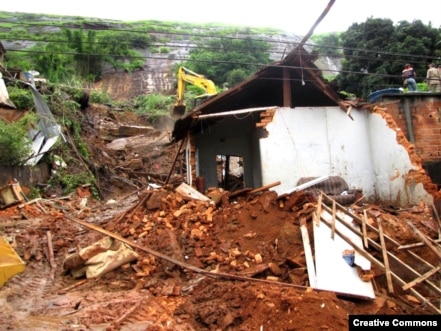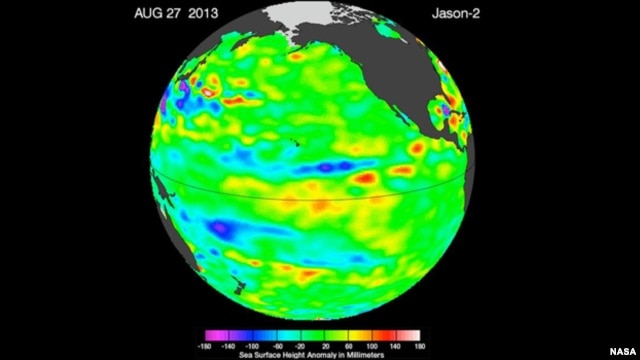Stephanie
Diamond Member
- Jul 11, 2004
- 70,230
- 10,864
- 2,040
links in article at site
SNIP:
By James Delingpole Environment Last updated: September 3rd, 2013
2768 Comments Comment on this article at site
Put him in the Special Punishment wing. He's earned it
If any business were to submit a prospectus as patently false and deliberately dishonest as the ones used to advance the cause of the global warming industry, its directors would all be in prison by now. (C Jeff Randall)
Does that mean Ed Davey should have followed Chris Huhne into the slammer for his claim to Andrew Neil on BBC Daily Politics the other day that in "a recent analysis of 12,000 climate papers…of the scientists who expressed a view 97 per cent said that climate change was happening and that it was human-made activity."?
Not quite, unfortunately, because nothing Davey has said there is technically untrue. A better candidate for prison, actually, would be whoever tweets under the name @BarackObama. When he Tweeted: "Ninety-seven percent of scientists agree: #climate change is real, man-made and dangerous" he was promulgating a demonstrable untruth.
No one has ever doubted that climate changes.
Pretty much everyone – probably more than 97 per cent, even – agrees that there is a degree of anthropogenic input, even it's just the barely measurable contribution of beef cattle farts or the heat produced by cities.
But the dangerous bit? No one has come even close to demonstrating it, there is no reliable evidence for it, and very few scientists – certainly far, far fewer than 97 per cent of them – would ever stake their reputations on such a tendentious claim.
The background to all this – and the "97 per cent of climate scientists say…." meme – is expertly covered in a new paper for the Global Warming Policy Foundation by Andrew Montford.
In a sane world it wouldn't have needed writing. An obscure green political activist called John Cook and a few of his eco-cronies produced a pseudo-scientific paper so riddled with flaws that it ought to have been tossed straight in the bin. Instead, it was bigged up by a compliant mainstream media, a desperate and propaganda-hungry green industry, and by the US President as a vitally significant meta-analysis offering indisputable proof of the scientific "consensus" on "climate change."
Montford concludes:
The consensus as described by the survey is virtually meaningless and tells us nothing about the current state of scientific opinion beyond the trivial observation that carbon dioxide is a greenhouse gas and that human activities have warmed the planet to some unspecified extent. The survey methodology therefore fails to address the key points that are in dispute in the global warming debate."
So how do the bastards go on getting away with it? Jamie Whyte provides a fascinating, erudite and original answer in his new paper for the Institute of Economic Affairs – Quack Policy.
(And for a summary of the lefty reaction so far, see here)
In it, he exposes the "rhetorical bluster" used, inter alia, by the climate alarmist establishment to make their case sound stronger and more trustworthily "scientific" than it really is. He is especially sceptical of those who try to advance their cause with the weasel phrase "evidence-based" policy.
"They are partial in their accounting for costs and benefits; they ignore substitution effects; they pretend that mathematical precision is evidence; they confound risk and uncertainty; and they exaggerate the certainty warranted by the available evidence. Having committed such errors, they obscure them with grandiose irrelevancies about peer-reviewed publication, consensus among scientists and the proclamations of official scientific committees."
For Whyte – an economist as well as a philosopher – the fundamental flaw in the warmist argument is its failure to a use a realistic discount rate.
None of the projected disastrous effects of climate change exists in the present but only in an imaginary future (which may never come to pass: these are only unverifiable computer model "projections", remember). So we ought, when considering our expensive prevention/mitigation policies, factor in the key point that "future generations" are going to be richer than we are and therefore better able to pay for any problems that "climate change" may cause them.
But the alarmists cannot afford to admit this, for to do so would be fatally to weaken their case that the time for action is now and that any delay will be fatal. Their emphasis on their imminence of catastrophe is designed to preclude rational analysis, so as to railroad through policies before more temperate heads notice their flaws.
In order to give this catastrophism more credibility, alarmists are wont to appeal to the authority of the "consensus.' (Which is why, of course, the warmist establishment made such a meal of the Cook paper above).
Again, Whyte finds a fatal flaw in this line of argument:
The climate models that predict AGW have not been tested and they are not mere entailments of well-known physics and chemistry. Why, then, do scientists have such high levels of confidence in them? In other words, if a scientific consensus really does exist, this is what needs to be explained. It cannot explain itself, nor justify itself.
Good point. And I'd love to hear a convincing answer to this from the numerous well-known scientists who have used their prestige or their celebrity or their presumed expertise to help push the great climate change scare. I'm thinking here of everyone from Lord Winston and Sir Paul Nurse to science-background celebs such as Ben Goldacre, Simon Singh and Dara O'Briain, all of whom on various occasions have purported to know that "climate change" is a major problem because apparently there is some kind of "consensus" among scientists.
Whyte elucidates further:
all of it here with comments
If you still believe in 'climate change' read this? ? Telegraph Blogs
SNIP:
By James Delingpole Environment Last updated: September 3rd, 2013
2768 Comments Comment on this article at site
Put him in the Special Punishment wing. He's earned it
If any business were to submit a prospectus as patently false and deliberately dishonest as the ones used to advance the cause of the global warming industry, its directors would all be in prison by now. (C Jeff Randall)
Does that mean Ed Davey should have followed Chris Huhne into the slammer for his claim to Andrew Neil on BBC Daily Politics the other day that in "a recent analysis of 12,000 climate papers…of the scientists who expressed a view 97 per cent said that climate change was happening and that it was human-made activity."?
Not quite, unfortunately, because nothing Davey has said there is technically untrue. A better candidate for prison, actually, would be whoever tweets under the name @BarackObama. When he Tweeted: "Ninety-seven percent of scientists agree: #climate change is real, man-made and dangerous" he was promulgating a demonstrable untruth.
No one has ever doubted that climate changes.
Pretty much everyone – probably more than 97 per cent, even – agrees that there is a degree of anthropogenic input, even it's just the barely measurable contribution of beef cattle farts or the heat produced by cities.
But the dangerous bit? No one has come even close to demonstrating it, there is no reliable evidence for it, and very few scientists – certainly far, far fewer than 97 per cent of them – would ever stake their reputations on such a tendentious claim.
The background to all this – and the "97 per cent of climate scientists say…." meme – is expertly covered in a new paper for the Global Warming Policy Foundation by Andrew Montford.
In a sane world it wouldn't have needed writing. An obscure green political activist called John Cook and a few of his eco-cronies produced a pseudo-scientific paper so riddled with flaws that it ought to have been tossed straight in the bin. Instead, it was bigged up by a compliant mainstream media, a desperate and propaganda-hungry green industry, and by the US President as a vitally significant meta-analysis offering indisputable proof of the scientific "consensus" on "climate change."
Montford concludes:
The consensus as described by the survey is virtually meaningless and tells us nothing about the current state of scientific opinion beyond the trivial observation that carbon dioxide is a greenhouse gas and that human activities have warmed the planet to some unspecified extent. The survey methodology therefore fails to address the key points that are in dispute in the global warming debate."
So how do the bastards go on getting away with it? Jamie Whyte provides a fascinating, erudite and original answer in his new paper for the Institute of Economic Affairs – Quack Policy.
(And for a summary of the lefty reaction so far, see here)
In it, he exposes the "rhetorical bluster" used, inter alia, by the climate alarmist establishment to make their case sound stronger and more trustworthily "scientific" than it really is. He is especially sceptical of those who try to advance their cause with the weasel phrase "evidence-based" policy.
"They are partial in their accounting for costs and benefits; they ignore substitution effects; they pretend that mathematical precision is evidence; they confound risk and uncertainty; and they exaggerate the certainty warranted by the available evidence. Having committed such errors, they obscure them with grandiose irrelevancies about peer-reviewed publication, consensus among scientists and the proclamations of official scientific committees."
For Whyte – an economist as well as a philosopher – the fundamental flaw in the warmist argument is its failure to a use a realistic discount rate.
None of the projected disastrous effects of climate change exists in the present but only in an imaginary future (which may never come to pass: these are only unverifiable computer model "projections", remember). So we ought, when considering our expensive prevention/mitigation policies, factor in the key point that "future generations" are going to be richer than we are and therefore better able to pay for any problems that "climate change" may cause them.
But the alarmists cannot afford to admit this, for to do so would be fatally to weaken their case that the time for action is now and that any delay will be fatal. Their emphasis on their imminence of catastrophe is designed to preclude rational analysis, so as to railroad through policies before more temperate heads notice their flaws.
In order to give this catastrophism more credibility, alarmists are wont to appeal to the authority of the "consensus.' (Which is why, of course, the warmist establishment made such a meal of the Cook paper above).
Again, Whyte finds a fatal flaw in this line of argument:
The climate models that predict AGW have not been tested and they are not mere entailments of well-known physics and chemistry. Why, then, do scientists have such high levels of confidence in them? In other words, if a scientific consensus really does exist, this is what needs to be explained. It cannot explain itself, nor justify itself.
Good point. And I'd love to hear a convincing answer to this from the numerous well-known scientists who have used their prestige or their celebrity or their presumed expertise to help push the great climate change scare. I'm thinking here of everyone from Lord Winston and Sir Paul Nurse to science-background celebs such as Ben Goldacre, Simon Singh and Dara O'Briain, all of whom on various occasions have purported to know that "climate change" is a major problem because apparently there is some kind of "consensus" among scientists.
Whyte elucidates further:
all of it here with comments
If you still believe in 'climate change' read this? ? Telegraph Blogs




